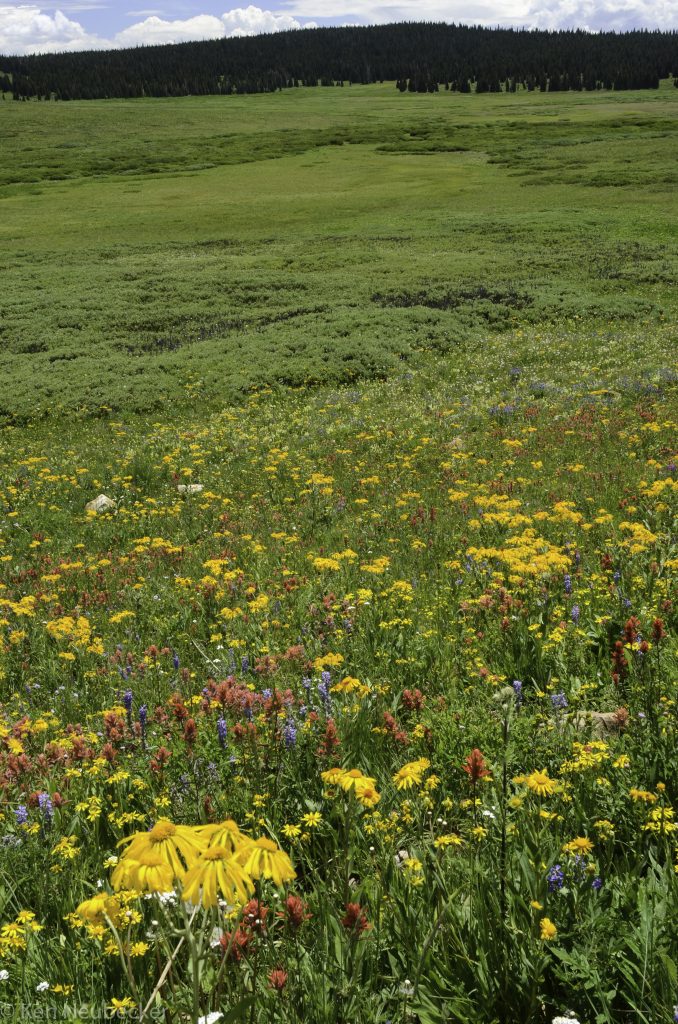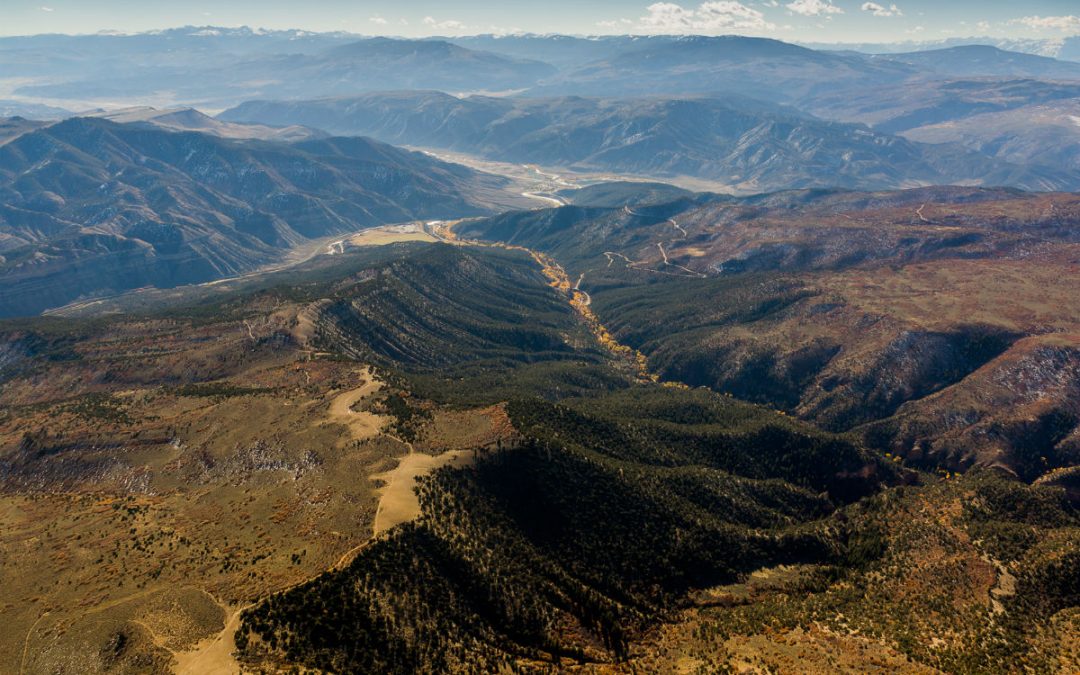By all accounts, Deep Creek is a special place. Dramatic canyon walls rise more than 2,000 feet above the river, limiting human access and housing one of the largest complex of caves in the West. From top to bottom, Deep Creek drops 4,500 feet, displaying nearly the full range of Colorado’s ecosystems.
A 1995 joint report by the U.S. Forest Service (USFS) and Bureau of Land Management (BLM) found Deep Creek eligible for wild and scenic designation. Further review yielded a 2015 suitability decision on two segments of Deep Creek totaling 10.77 river miles. Suitability on Deep Creek felt different than previous studies on other rivers in Colorado—there wasn’t substantial opposition to the idea of protecting Deep Creek as a wild and scenic river. “We seemed to have an agreement of opinion that this might be a good
addition to the system,” says Roy Smith, wild and scenic rivers lead for the BLM in Colorado.

Wild flowers on Coffee Pot Road near Deep Creek. Photo by Ken Neubecker
After the suitability finding was published, stakeholders pulled together to air concerns and discuss river protections. Some neighbors worried that wild and scenic designation could limit the use of nearby land, says Ken Neubecker with American Rivers. Terrain above the canyon is used for grazing and ranching, while pilots from a nearby High-Altitude Army National Guard Aviation Training Site (HAATS) fly through it for training. To address concerns, they’re workshopping a set of guiding principles that all parties agree should be followed to maintain their use while protecting the river. The group is also working with the USFS, BLM and Colorado Water Conservation Board (CWCB) to quantify flows needed to maintain riparian health in the canyon.
Once flow needs are identified, stakeholders will pursue a state instream flow water right with the CWCB, rather than risk the uncertainty of a federal reserved water right. Eventually, once the principles are complete, the group will transform them into legislative language and work with Congress to designate the creek as wild and scenic.
In 1968, Congress passed the landmark Wild and Scenic Rivers Act—making 2018 its 50th anniversary—to “preserve selected rivers with outstanding natural, cultural and recreational values in a free-flowing condition for the enjoyment of present and future generations.” To date, 12,734 miles of streams across the nation are protected as wild and scenic rivers.
Colorado boasts just 76 miles of one wild and scenic river, the Cache La Poudre, designated in 1986. The state doesn’t lack eligible rivers, but the act precludes the damming of designated rivers.
On most rivers in Colorado, concerns around future water shortage and storage needs have led stakeholders to look for alternatives to wild and scenic designation. However, negotiations on Deep Creek indicate that the state could soon tally two wild and scenic rivers.


 Print
Print